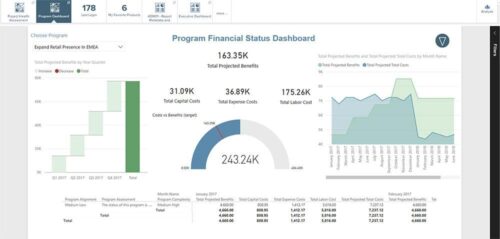The Stone Age was marked by man’s clever use of crude tools; the information age, to date, has been marked by man’s crude use of clever tools – source unknown
Is your organization challenged by portfolio management? If so, why? Do you understand the real impediments of driving a structured approach? I’ve seen these types of things prevent organizations from moving forward:

- teams over reliant on a sophisticated tool that is barely useful as a time tracking application
- lack of process to enable a framework for standardized, repeatable, and scalable decision making in support of the portfolio
- sunk costs, annual licensing, and on-going support fees for a big tool that does not align with organizational requirements
I’m not a fan of project and portfolio management tools. I’m a tool bigot. But don’t get me wrong. There is nothing wrong with leveraging tools. My bigotry is born of the way tools are typically selected and implemented before processes are defined. In my experience, it is about what comes first: process, knowhow, or tool.
I love metaphors and I use them throughout Delivery Effectiveness. One image I like is that of the Do It Yourselfer (DIY). Pretend you want to improve your DIY capabilities. I’m always amazed that DIY-types have great tools. Now that you are ready to become a full-fledged DIY’er, you’ve got to get some tools.
You rush out to the local hardware chain and rack up $10,000 in all the best tools. Brilliant! Right? Well, you’ve never used a table saw, you don’t have the skills to use a nail gun, and as far as electrical work, your lack of skills is shocking. All the greatest tools will not make you a skilled craftsman. The same is true with project and portfolio management. I’ve seen too many companies invest in a heavy project management tool without sufficient requirements, design, process, or the know-how to use the tool within their environment.
For organizations that I’ve helped to develop strong portfolio management processes, I did not start with an investment in an expensive and sophisticated tool. The best opportunity is to develop portfolio processes that allow the right initiatives to be nurtured, developed, executed, or shut down. Get the process right first. Then consider automation. Automating a good process is very Six Sigma: automating a bad process, well, that’s just a bad idea and a waste of money.
Do you know what you are trying to automate? Is it one of these high-level business functions:
- Work In-Take
- Project Evaluation
- Project Prioritization
- Pipeline management
- Resource management
- Project change management
- Financial management
- Portfolio Risk management
- Portfolio Monitoring & Reporting
If, as processes mature, there is an opportunity to apply a tool to improve efficiency or to make the practices more effective, that is a tool implementation I can support. I believe that whenever well thought out process development precedes tool selection, the odds for successful implementation increase significantly. If you want to be more well positioned with expertise to help advance your portfolio management capabilities, please reach out via LinkedIn or check TSI out for more information. I love to network, meet new people, and talk shop about effective delivery. At TSI, we excel at helping our clients build process, define requirements, and select the right tools.
When you are ready to evaluate some tools, check out this listing from Gartner to get you started.
